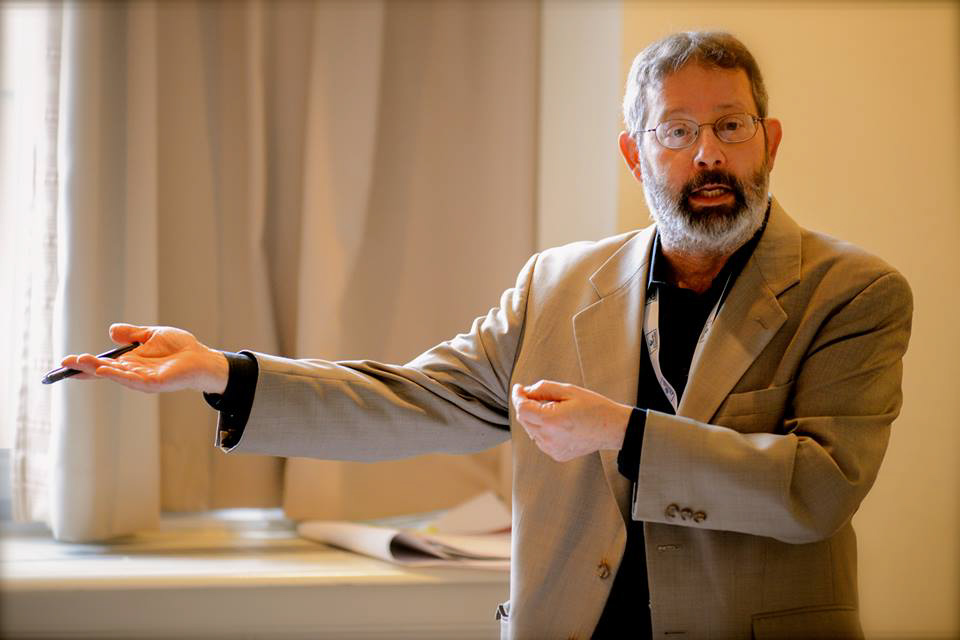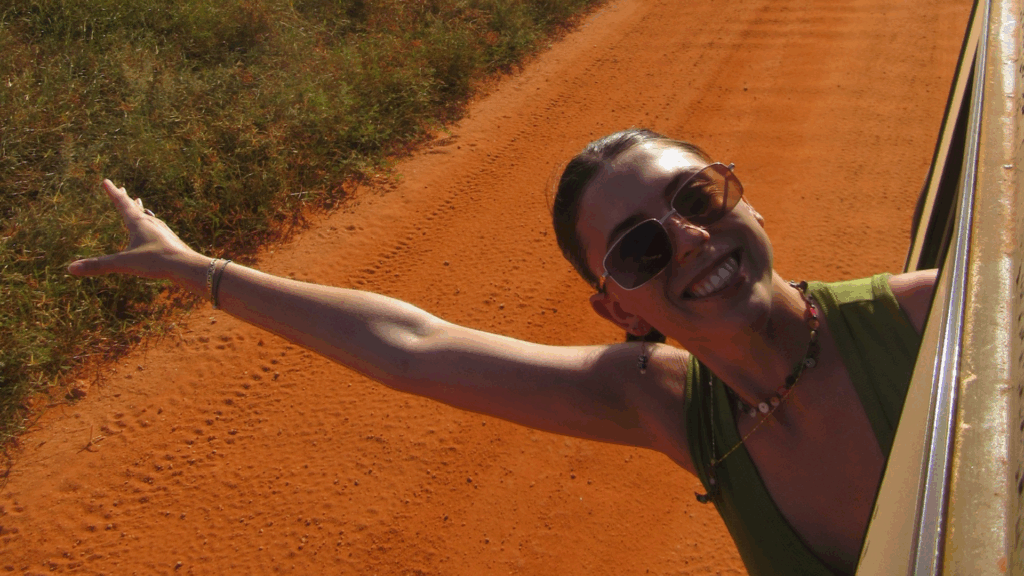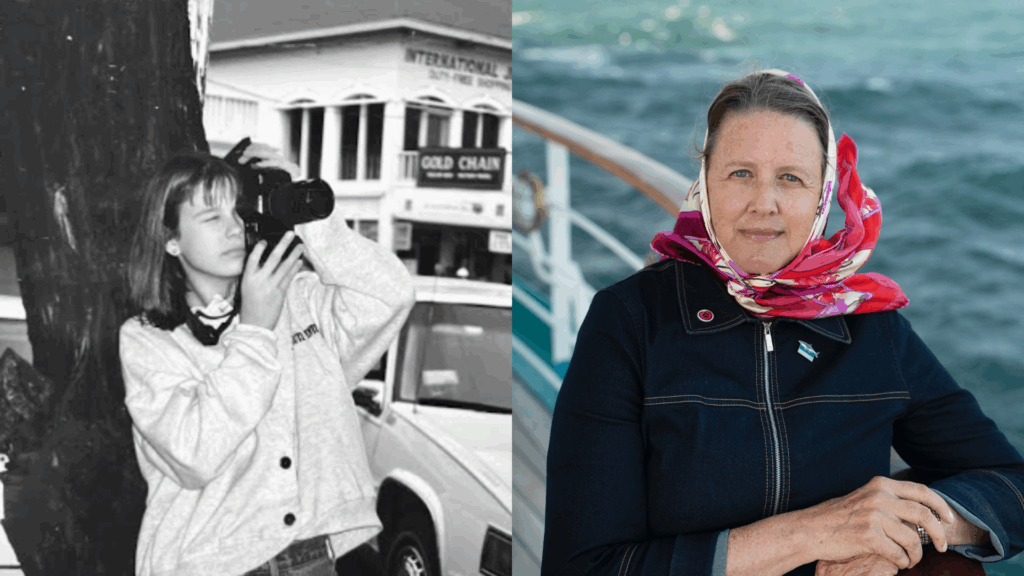Written by student, Matt Kreiser, Cal Poly San Luis Obispo
Three days in Cambodia was a whirlwind emotionally, physically and spiritually. The journey began with a flight late in the day from Ho Chi Minh City to the capital, Phnom Penh. The next morning I was up at 6:30 a.m. to tour the Tuol Seng Genocide Museum, a former top-secret prison named S-21 that the Khmer Rouge operated from 1975-1979 during the Cambodian genocide. The secured nature of the museum didn’t allow pictures inside.
On the way to the museum I was horrified to learn that both of our tour guides had suffered during the Cambodian Genocide. The father of our first tour guide, Sattya, was killed during the rule of the Khmer Rouge while our second tour guide’s mother was held in S-21. He said that Khmer Rouge officials tortured his mother when he was just a boy. He said she was later buried alive.
At Tuol Seng, I learned about how the Khmer Rouge operated S-21. It was largely used as a torture and execution center. Prisoners were tortured until they made confessions against their family and friends, who were then also tortured and killed. The prison held academics, doctors, teachers, students, factory workers, monks and officials from the prior government. The Khmer Rouge targeted these people because they believed in a classless, purely agrarian society.
Roughly 17,000 people were killed at S-21. Between 1.7 and 3 million people were killed throughout the genocide that lasted from 1975 to 1979. At the prison I felt angry, sad and very disturbed.
First we were taken to prison rooms and shown how prisoners lived, and learned that S-21 was a high school prior to the Khmer Rouge gaining power. After that our group saw exhibits of disturbing pictures, human skulls and bones, and portraits of victims at the prison. Between 1975 and 1979 every person arriving at the prison was photographed.
The genocide in Cambodia made me think of other atrocities like the Holocaust and the Rwandan Genocide. However, Cambodia is much worse off than Germany and arguably worse off than Rwanda, a country who just recently experienced its genocide in 1994. I wondered why Cambodia is doing so badly. On the way to our next stop, the Royal Palace, I started to find out.
Cambodia has been ruled by Hun Sen, a former Khmer Rouge commander, for over 25 years. This outraged me. How could world powers allow a former member of the Khmer Rouge to become a dictator? After a successful coup that year to regain control of the government, Hun Sen rose to power, yet the international community stayed silent.
Our guide Sattya explained to us at the Royal Palace that the Cambodian government is officially a unitary parliament with a constitutional monarchy. The king, he explained, is like the queen of England. The problem is that their parliament is also like the queen of England, with similar levels of power that amount to more of a celebrity status instead of real political prowess.
Hun Sen, who sits at the top of the food chain, is a dictator through and through. Sattya told us that there is still limited freedom of speech in Cambodia and that he could not speak badly about the government or Hun Sen in public. Taking a calculated risk, he later whispered to us that the people call Sen the “puppet king.”
He also told us, if he criticize the government he would disappear from the world.
It was strange to learn these things amid the backdrop of the Royal Palace, which may very well be the most beautiful palace I have ever seen. The white buildings with golden roofs surrounded by picturesque gardens were a breath of fresh air. The complex was built in 1866 and has been occupied by the king ever since.
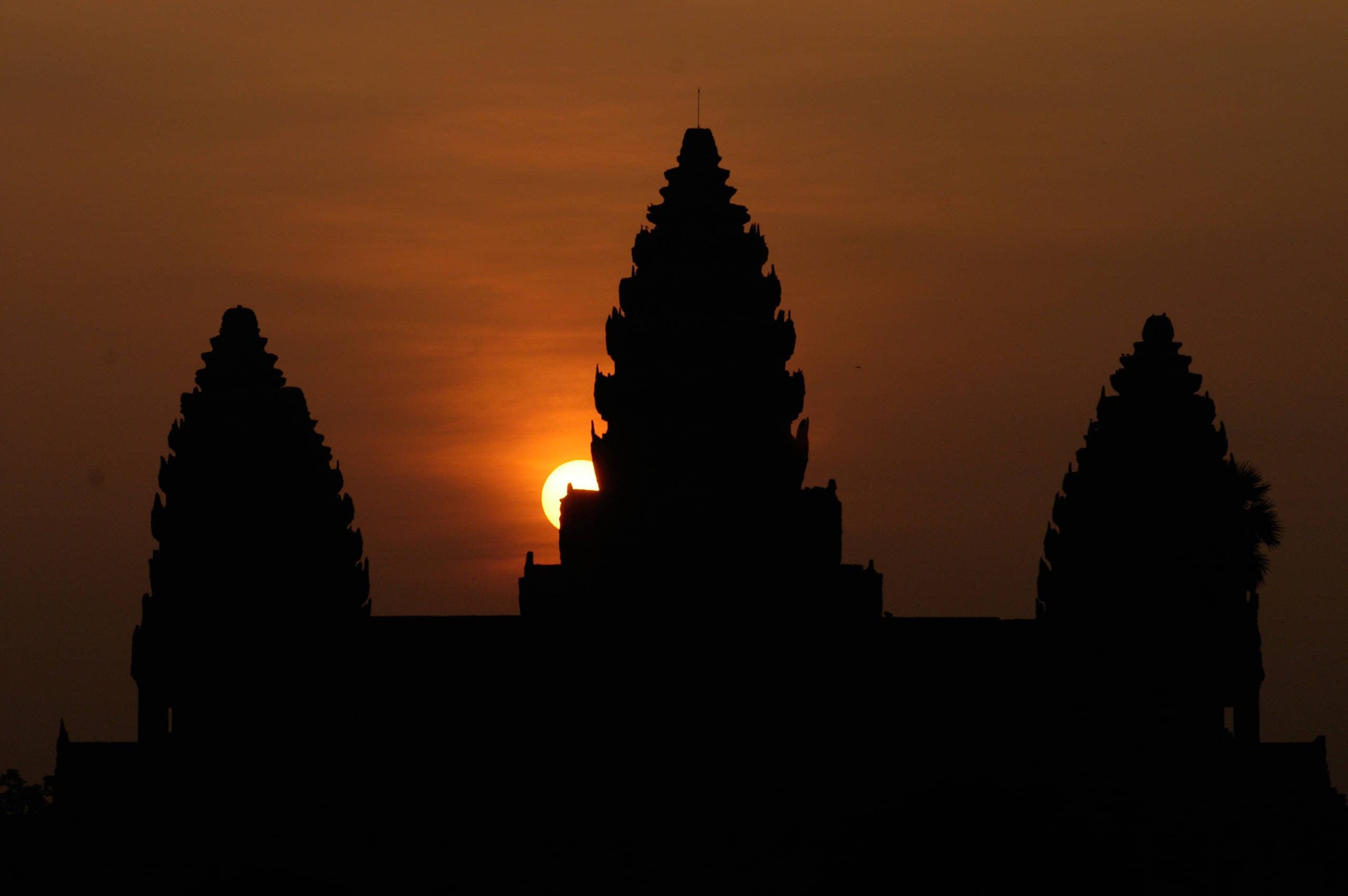 Leaving the royal palace I snapped back to reality. Disabled and disfigured men in wheelchairs rolled up to us begging for money as we headed for our bus, which then took us to enjoy a traditional Southeast Asian meal. The spring rolls were my favorite.
Leaving the royal palace I snapped back to reality. Disabled and disfigured men in wheelchairs rolled up to us begging for money as we headed for our bus, which then took us to enjoy a traditional Southeast Asian meal. The spring rolls were my favorite.
From there we transferred to the Phnom Penh airport. Earlier in the trip, I noticed that airport security was poor, so going through security I didn’t take out my laptop or toiletries even though signs indicate that you must. It all passed through just fine. I thanked God that Cambodia didn’t have enemies because I wouldn’t be comfortable with the seemingly relaxed security if it did.
From there we flew to Siem Riep, the storied city of the largest religious monument in the world, Angkor Wat. Our first stop however was the Leadership School for Young Women, a high school for girls emphasizing education and goal setting. I was very excited to meet the girls and see how they lived.
Once we got to the school, we began carrying soil with them to help fill two wells. I spent an hour shoveling and carrying dirt, talking to as many of the girls as I could to hear their stories. Most of them wanted to be doctors or teachers when they grew up, and I felt hope as I saw their joy in telling me this. During my conversations with the students, I encouraged them and emphasized the importance of their education. The students clearly looked up to our group, and I was excited to make such a positive influence on them.
The quality of the student’s English language abilities varied a lot. One student, who had a camera and was responsible for taking pictures stood out to me. Her name is Channy Set and she wants to become a journalist one day. Her English was very good and I am optimistic about her future.
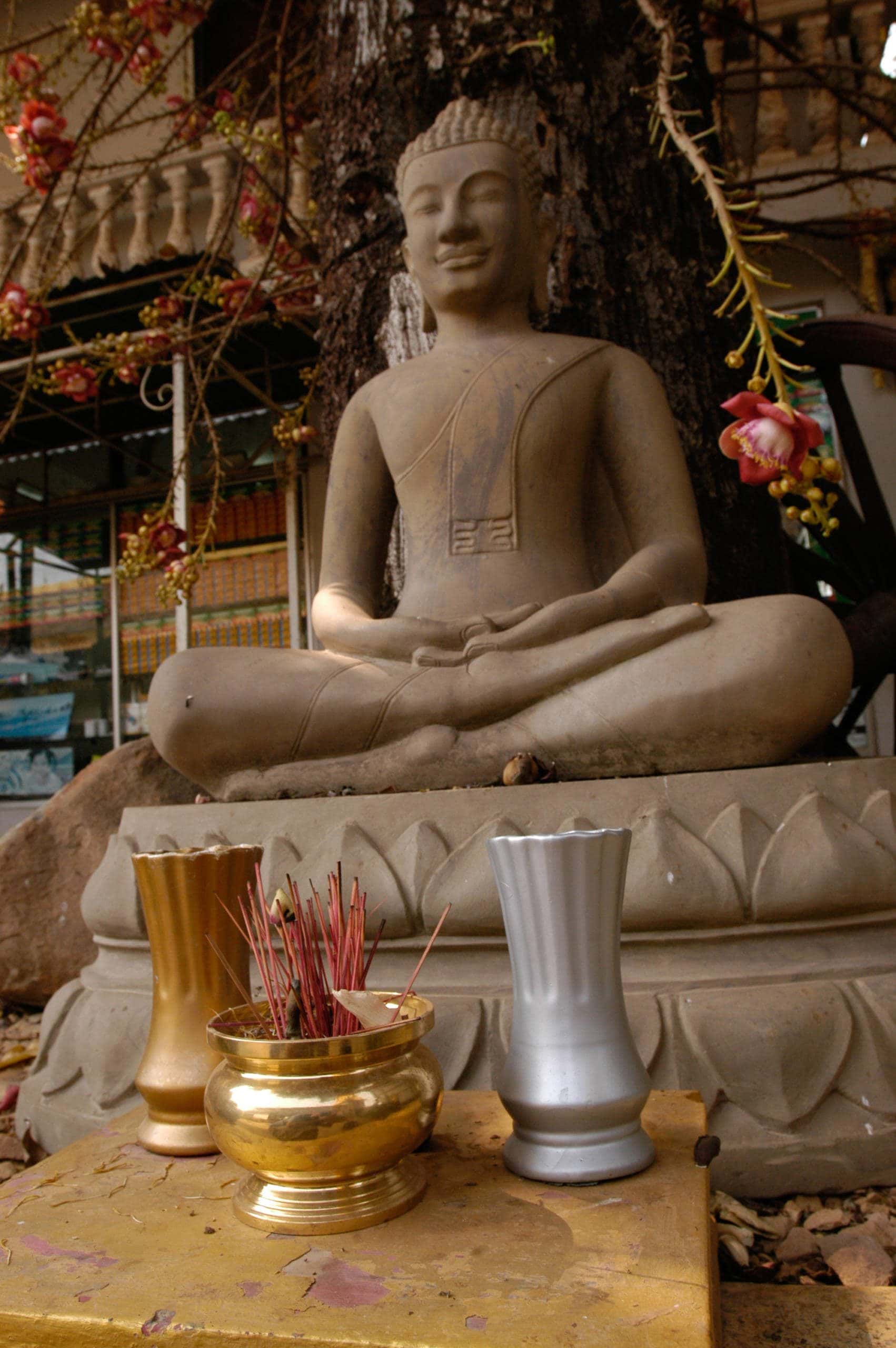 All the students I talked with were from poor agricultural families. Agriculture still accounts for 90% of GDP in Cambodia. To me, this shows exactly how successful the Khmer Rouge was at turning the region into an agrarian state and how governments that followed have failed to properly develop infrastructure and industry.
All the students I talked with were from poor agricultural families. Agriculture still accounts for 90% of GDP in Cambodia. To me, this shows exactly how successful the Khmer Rouge was at turning the region into an agrarian state and how governments that followed have failed to properly develop infrastructure and industry.
After finishing the work of filling the wells we were able to share a meal during snack time. During this time music played and we all danced together while enjoying each other’s company.
After that, we played traditional Cambodian games. One of the games was to get blindfolded and try to shatter a clay pot hanging in the air like a pi√±ata with a big stick. A huge circle of students was formed and I was the second person who got to play. I was blindfolded and subsequently spun around many times, and I quickly lost my sense of direction. There were huge screams from the students yelling at me in Khmer to adjust the angle of my swing. I couldn’t understand though, so after three strikes I was out. After me a young woman shattered the clay pot on her first try.
Sadly, after this, our time at the school was over. I passed out business cards to a few of the students so that we could connect in the future. Already a few of them have become friends with me on Facebook. At the least, I hope to continue to communicate and encourage them. I also hope to support the continuation of their education, not only of those students in the Leadership School but of Cambodians across the country.
The next day our wake-up call was 4:30 a.m. for sunrise at Angkor Wat. Angkor Wat means “city of temples” in Khmer, the official language of Cambodia. It was originally constructed as a Hindu temple for the Khmer Empire, gradually transforming into a Buddhist temple toward the end of the 12th century.
It was surprisingly cool and dark when we arrived, so I was glad I wore jeans and my jacket. To get to the main temple we had to walk through another temple that was pitch black. It was exciting to go through something so ancient in pure darkness. I was excited to see this monument coupled with the beauty of a sunrise. In my opinion, it is one of the great wonders of the world, and the pictures really speak for themselves.
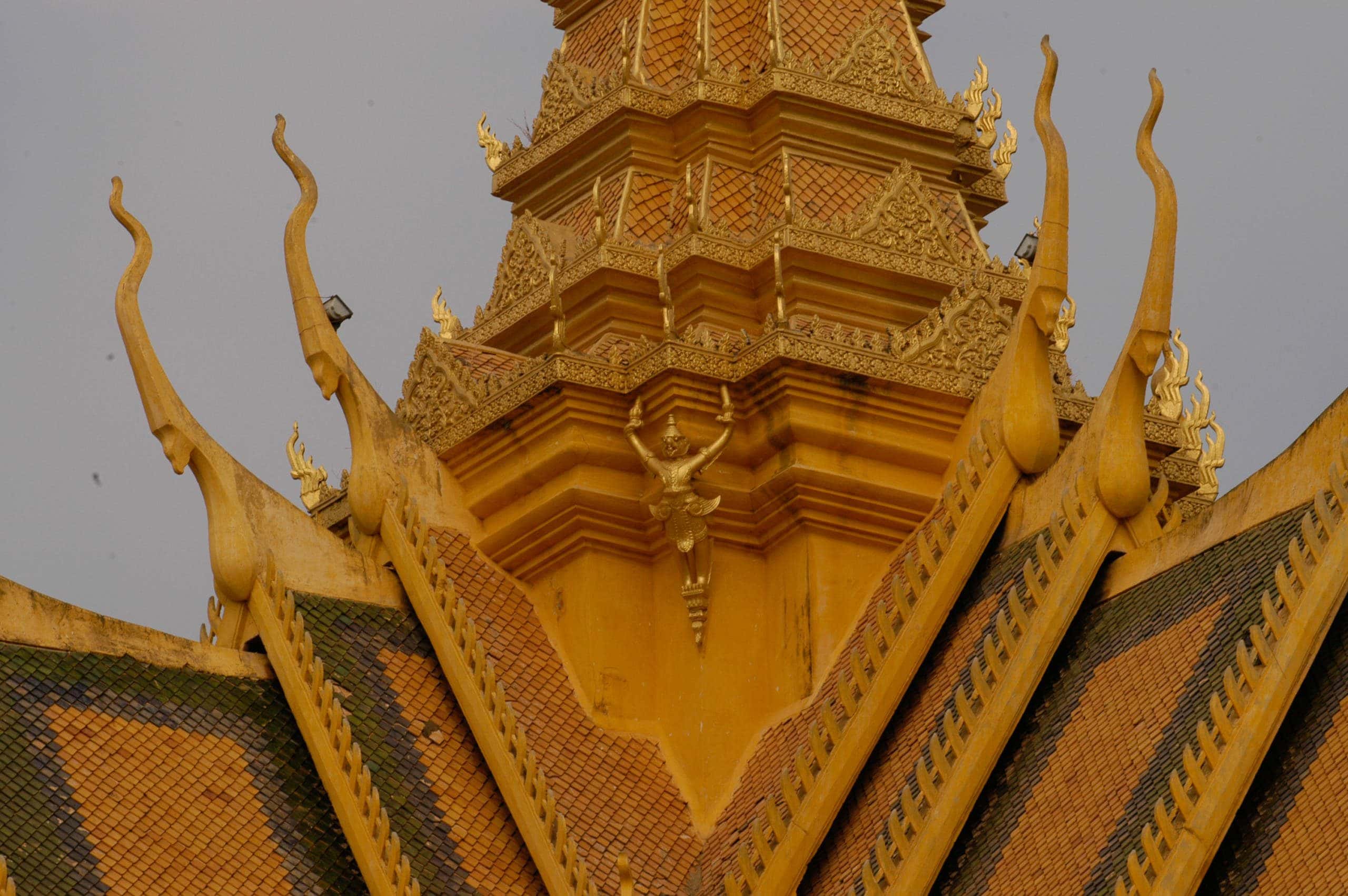 There were tourists everywhere. Over two million people visit the temple complex each year and the number of visitors continues to increase. It is, after all, the largest religious monument in the world as well as a major heritage site for Hinduism and Buddhism. It is also of historical significance as its construction marks the height of the Khmer Empire. For me it is hard to imagine how such construction could be accomplished, so far in the past.
There were tourists everywhere. Over two million people visit the temple complex each year and the number of visitors continues to increase. It is, after all, the largest religious monument in the world as well as a major heritage site for Hinduism and Buddhism. It is also of historical significance as its construction marks the height of the Khmer Empire. For me it is hard to imagine how such construction could be accomplished, so far in the past.
The rest of the day we traveled through Angkor to explore different temples. We took Tuk Tuk’s, small motorcycles with an open-air carriage attached to the back. Riding in this way reminded me just how polluted Cambodia is.
Prior to Cambodia, I had been traveling through China, a country that gets a lot of attention for its smog and pollution levels. Yet to me it was multiples better than that of Cambodia. Every time I walked outside in Cambodia it smelled like there had been a forest fire.
Despite this, our Tuk Tuk ride just after sunrise at Angkor Wat was one of my favorite memories from the trip. It was a weekday so during my ride I was able to see the hustle and bustle of the townspeople. I saw many children riding bicycles to school and lots of adults on motorcycles, probably making their way to work. Many different items like food and water bottles were being transported on all types of vehicles.
My favorite part though was witnessing a woman on a motorbike holding hands with a man on a bike, pulling him down the road.
Our next stop in Angkor was Bayon Temple, located in the center of the ancient city of Angkor Thom. Researchers have concluded that Angkor was the largest pre-industrial city in the world. They estimated a population of up to one million people. Statues of faces making different expressions carved out of stone mark your entrance to the temple. Bayon was the last temple to be built by Jayavarman VII, who ruled at the height of the Khmer Empire. Again, it is almost impossible for me to imagine how such temples could be built.
The next temple we saw was an unrestored temple, which Sattya considered more of a ruin than a temple because of its run-down nature. The special part of the temple was the massive trees embedded in the structure of the temple. The roots of the trees went all around the stone of the temple, wrapping their way through the religious site.
After visiting this temple I was again reminded of the poverty of Cambodia. Children ranging from four to twelve years old hawked their souvenir items around us. On the back of our tickets we were warned not to by anything from the children, as it is impossible to know where the money is going. Often the money goes towards some very bad things.
Seeing children as young as four or five yelling “one dollar” desperate to earn business was shocking to me. I couldn’t believe what my eyes were seeing, and many other tourists couldn’t believe it either.
For our final stop we headed back to Angkor Wat to explore the temple complex and learn more about its history. It was nice to spend an additional half an hour with Sattya. He lectured us while we gazed on at the beauty of the buildings. During my free time at the temple I walked all around and explored the different levels. There are three levels, and on the second level I saw Buddhist monks. They were very friendly and I was excited to ask them some questions. Unfortunately though, I don’t speak Khmer and they didn’t speak English, the language barrier showing itself yet again.
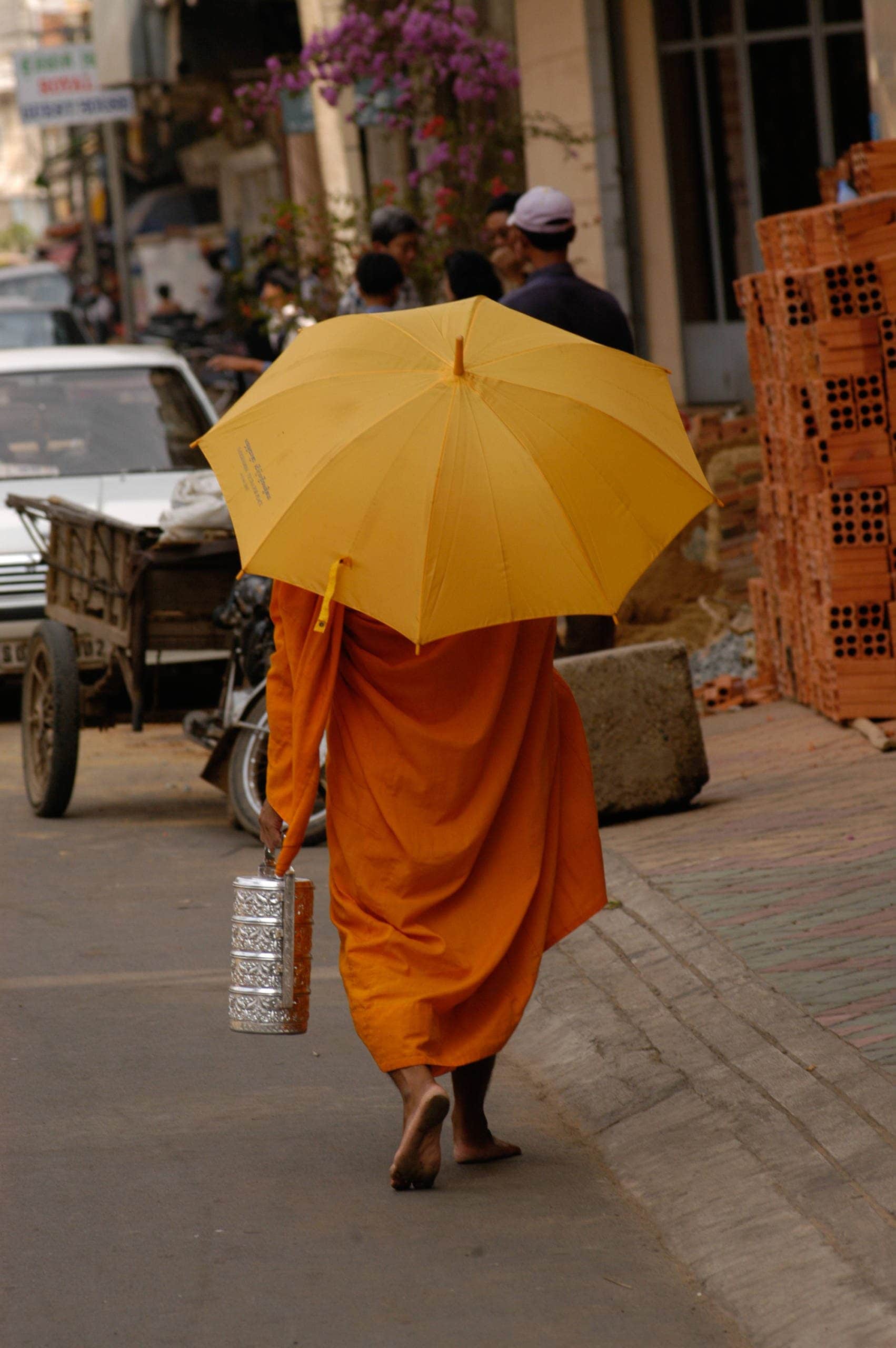 After this it was time to head back to Vietnam and to my home on the ship. To be honest, I was ready to leave. Our trip was a non-stop sprint and the things I saw were very mentally and emotionally challenging. I was ready to rest and reflect on my first visit to a developing country.
After this it was time to head back to Vietnam and to my home on the ship. To be honest, I was ready to leave. Our trip was a non-stop sprint and the things I saw were very mentally and emotionally challenging. I was ready to rest and reflect on my first visit to a developing country.
The theme for our Spring 2016 Semester at Sea voyage is hope. After this journey, I certainly have hope for the people of Cambodia. I see a determination in them that can overcome all of the political, environmental and economic issues that plague the country. My visit to the Leadership School for Young Women gave me that hope. Channy Set and young women like her paint the picture of a positive future for Cambodia.
